
Are you familiar with weathervanes? They are instruments used to show the directions of the wind, placed as finials on the highest points of buildings, particularly churches, barns, civic buildings, and shops. They take the form of sculptures and decorative objects, crafted in wood or metal. While weathervanes were invented in ancient China and Greece, they have come to be synonymous with Americana. They are still produced and used today, but their popularity went out of vogue in the 1950s. As soon as their usage waned, they attracted the attention of collectors and have since become a form of collectible art, found not only in historical museums, but also at the homes of collectors across the country. The American Folk Art Museum in New York has opened a remarkable show devoted to weathervanes made from the 17th century to the middle of the 20th century.
Last week, on a beautiful sunny afternoon, I made my way to the American Folk Art Museum, together with my mentor Derek Ostergrad, to learn from its director, Jason Busch, and Curator Emelie Gevalt, about the art and the canon of the weathervane. Titled ‘American Weathervanes: The Art of the Winds,’ this spectacular show is devoted to those historical artifacts which have entered the art market in a substantial way. Not having grown up in this country, I did not know a lot about weathervanes, yet I fell in love; not only because they are meticulously crafted architectural accessories, but are formed in naïve subjects and a wide variety of shapes and themes – doves, roosters, trains, angles, horses, birds – and not only because they represent a fascinating aspect of folk art, but because they make you smile. The weathervanes, I learned, came to communicate the purpose of the building: angles signaled churches; pens were placed on the rooftop of schools; cows topped barns; and fire engines signaled fire stations. All of these sculptures were seen on building tops and would swing with the wind.
The first historic museum show devoted to weathervanes opened at the Newark Museum in 1930, followed by a 1965 seminal show at the American Folk Art Museum. While there has been no scholarly exhibition of weathervanes since the 70s, the current show presents the crème de la crème, demonstrating why they have become desirable art objects. Private collectors had come to pay attention to weathervanes when American museums were still interested in collecting solely European art. In fact, the founder of the Museum, dealer Adele Earnest (1901-1993), is credited for pioneering the weathervane in the art market.
There are many layers to this show. It focuses on the history of collecting, on the narrative of the weathervanes, on craftsmanship and on their cultural phenomenal as material culture. Its power is the presentation. The exhibition takes over the entire museum, and when you arrive in the last room, the sculptures are presented in the most dramatic, theatrical way, with fantastic shadows, demonstrating the power of moving them from their original places to the heart of a museum. My favorite was ‘Curlew,’ made in 1874 for a barn in New Jersey, stylized in abstract form, and crafted from a sheet of metal.
The exhibition catalog is an important contribution to the subject. Authored by guest curator Robert Shaw, a scholar expert on American Folk Art, this seminal scholarly work will have a significant impact on our understanding of this early American sculptural art form, serving as the authoritative text on American weathervanes for generations to come.
Above: Curlew, artist unidentified, Seaville, N.J., c. 1874. Gold leaf on sheet metal with iron straps. 46 1/8 x 92 1/4 x 3/8 in. (American Folk Art Museum. Gift of Alice Kaplan, trustee (1977–1989), 2001.3.2. Photograph by John Bigelow Taylor).
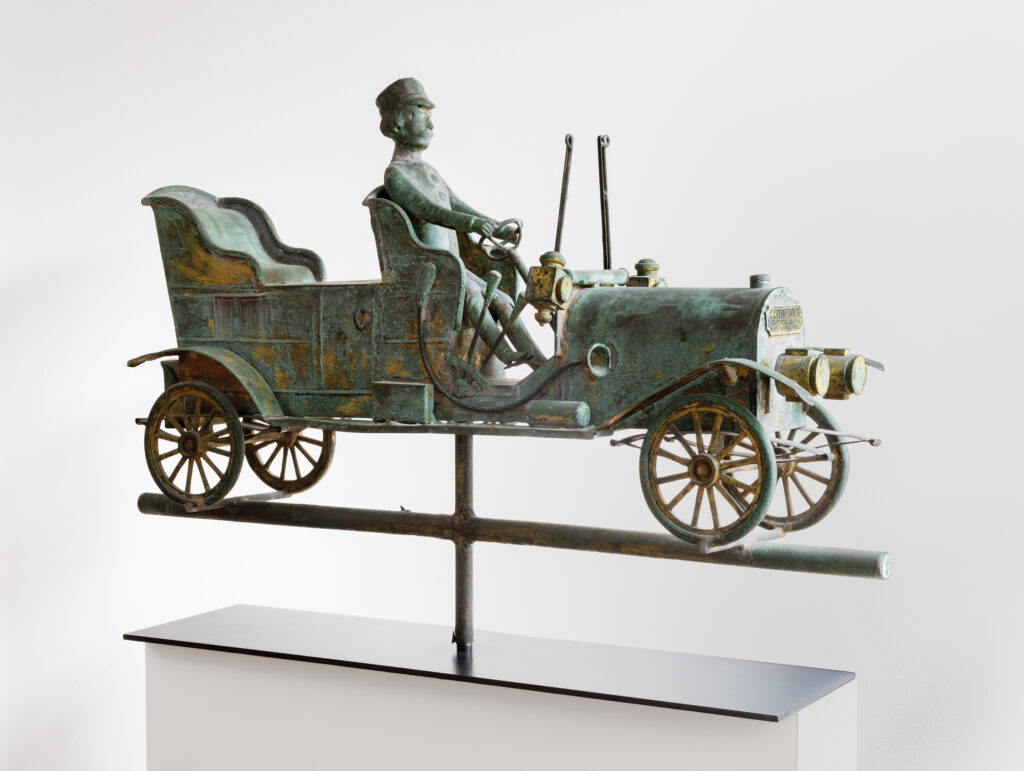
W. A. Snow Iron Works
Boston, Massachusetts
c. 1910
Molded copper with traces of gilt h. from bottom of wheels 18 in; l. 33 in.
Collection of Susan and Jerry Lauren
Photograph by Adam Reich
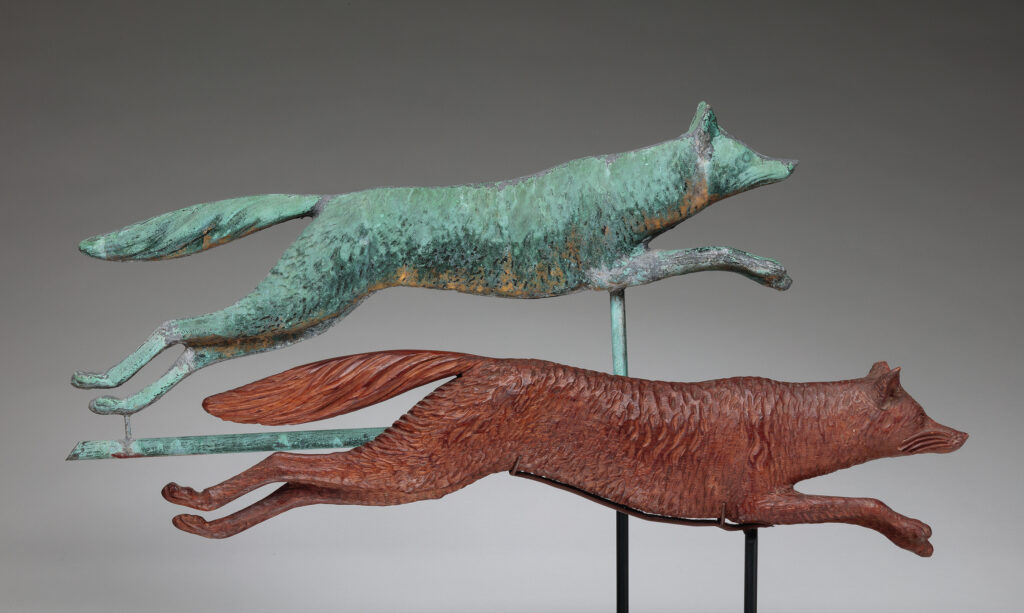
Cushing & White
Waltham, Massachusetts
c. 1870
Molded copper
6 3/4 x 22 1/2 x 2 5/8 in.
Private collection, courtesy David A. Schorsch and Eileen Smiles
Fox Weathervane Pattern
Harry Leach
Boston, Massachusetts
c. 1870
Carved pine
l. 22 in.
Private collection, courtesy David A. Schorsch and Eileen Smiles
Photograph by Richard Goodbody; courtesy David A. Schorsch and Eileen M. Smiles, Woodbury, CT
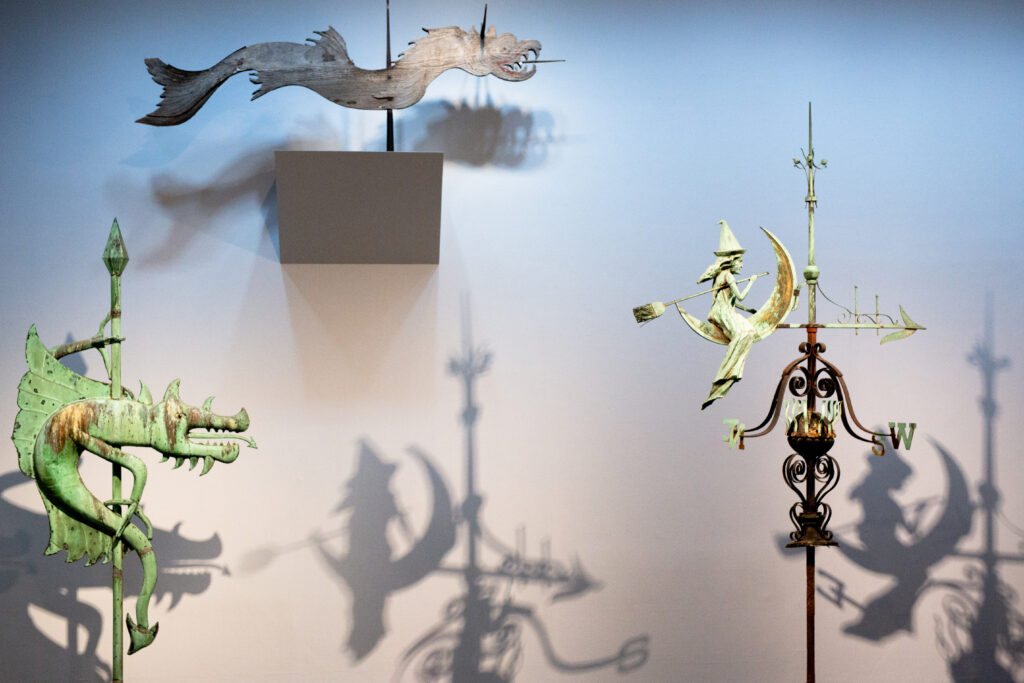
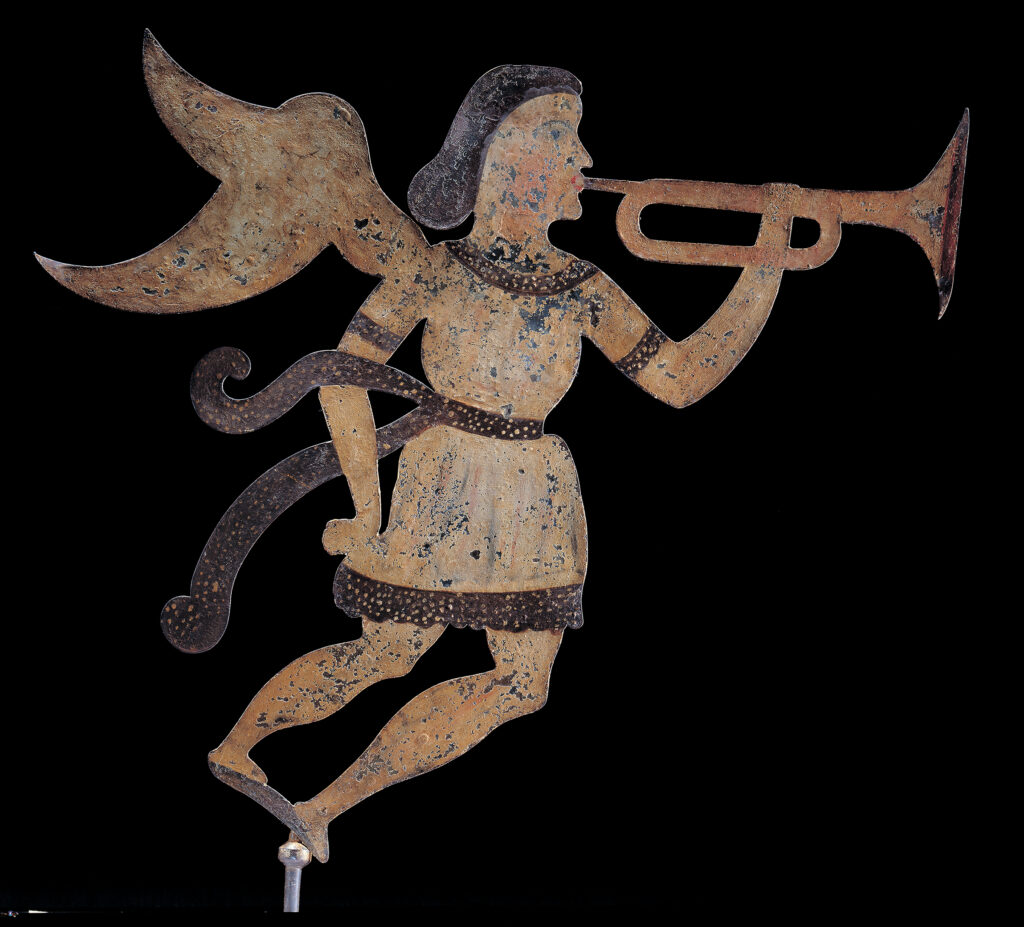
Artist unidentified
Northeastern United States
c. 1840
Paint on sheet metal
35 x 32 1/2 x 1 1/4 in.
American Folk Art Museum
Gift of Adele Earnest, 1963.1.1
Photograph by John Parnell
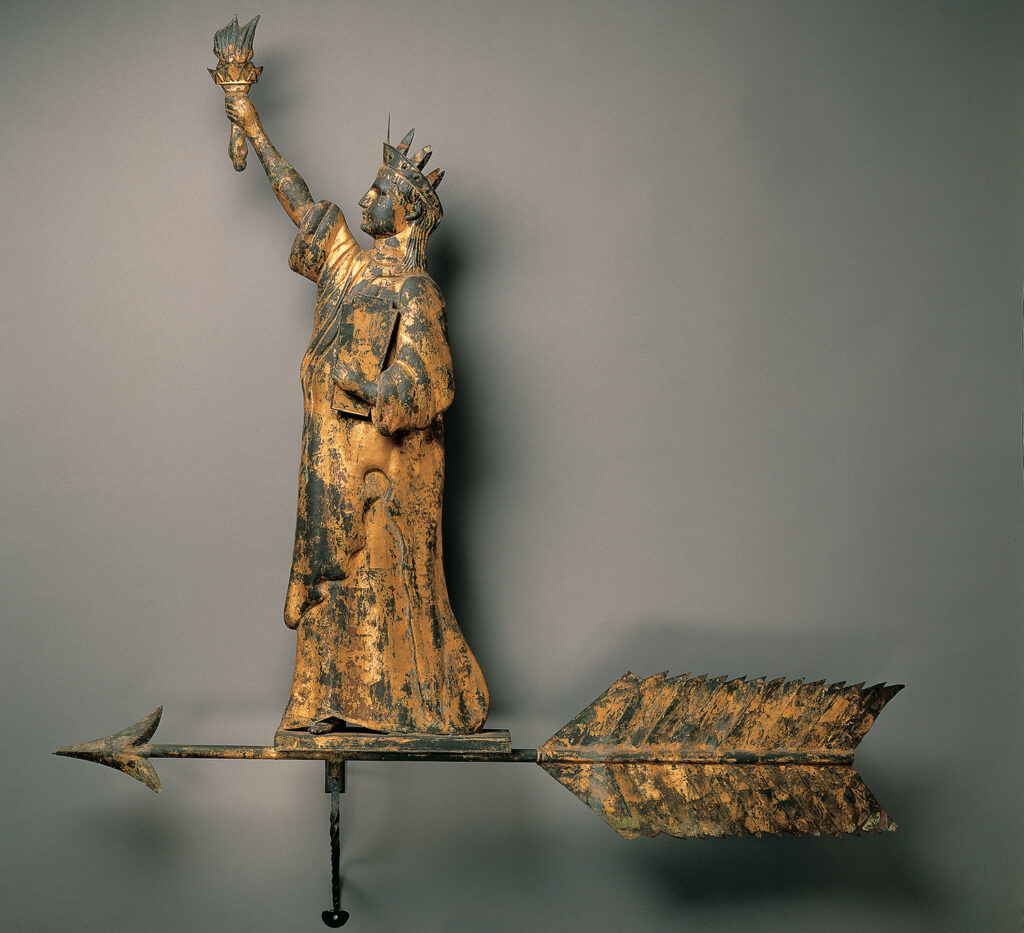
J. L. Mott Iron Works
New York and Chicago
c. 1885–92
Molded copper, gilded
h. 53 in.
Collection of Donna and Marvin Schwartz
Photograph Courtesy of Sotheby’s, Inc. © 2020
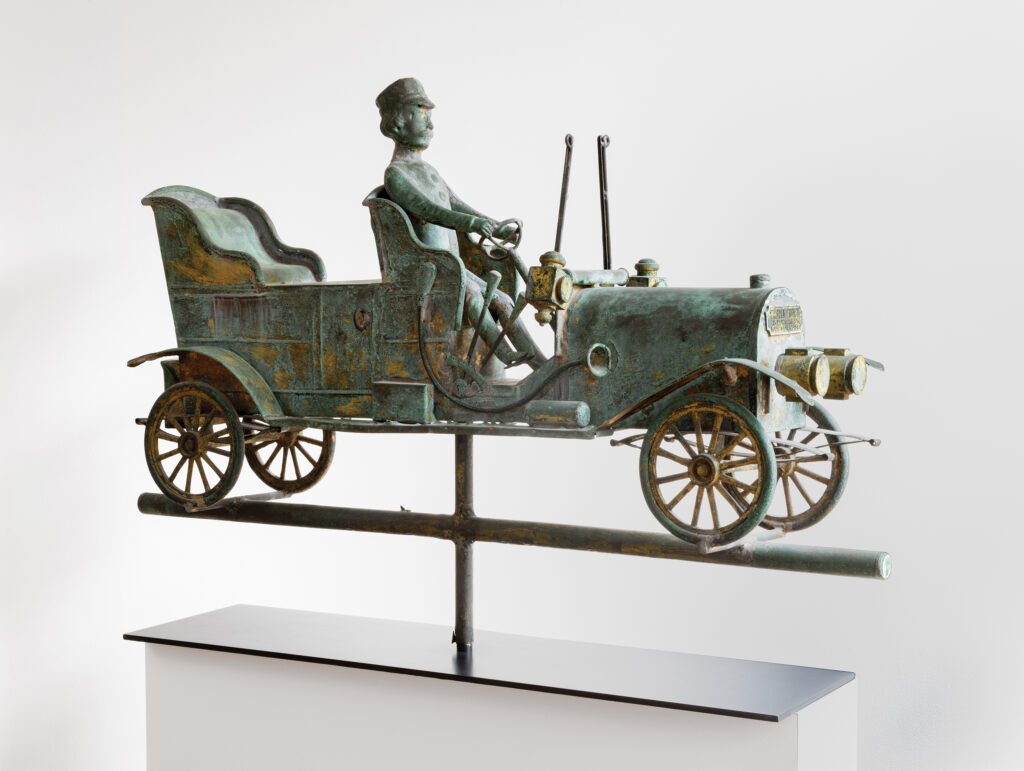
Liberty Enlightening the World
J. L. Mott Iron Works
New York and Chicago
c. 1885–92
Molded copper, gilded
h. 53 in.
Collection of Donna and Marvin Schwartz
Photograph Courtesy of Sotheby’s, Inc. © 2020
Touring Car and Driver
W. A. Snow Iron Works
Boston, Massachusetts
c. 1910
Molded copper with traces of gilt h. from bottom of wheels 18 in; l. 33 in.
Collection of Susan and Jerry Lauren
Photograph by Adam Reich
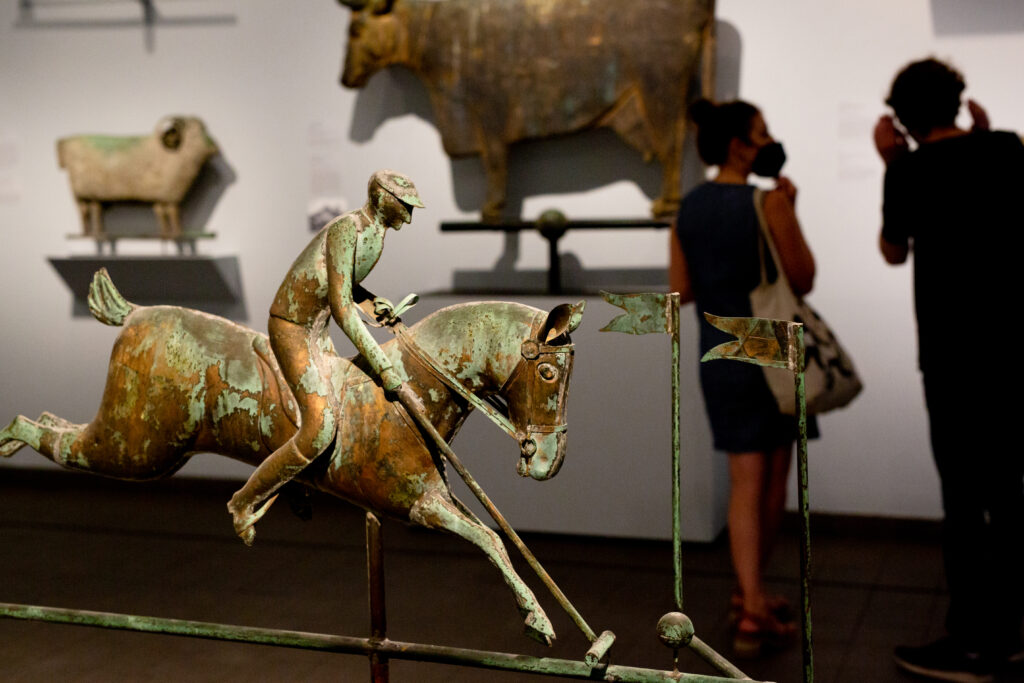
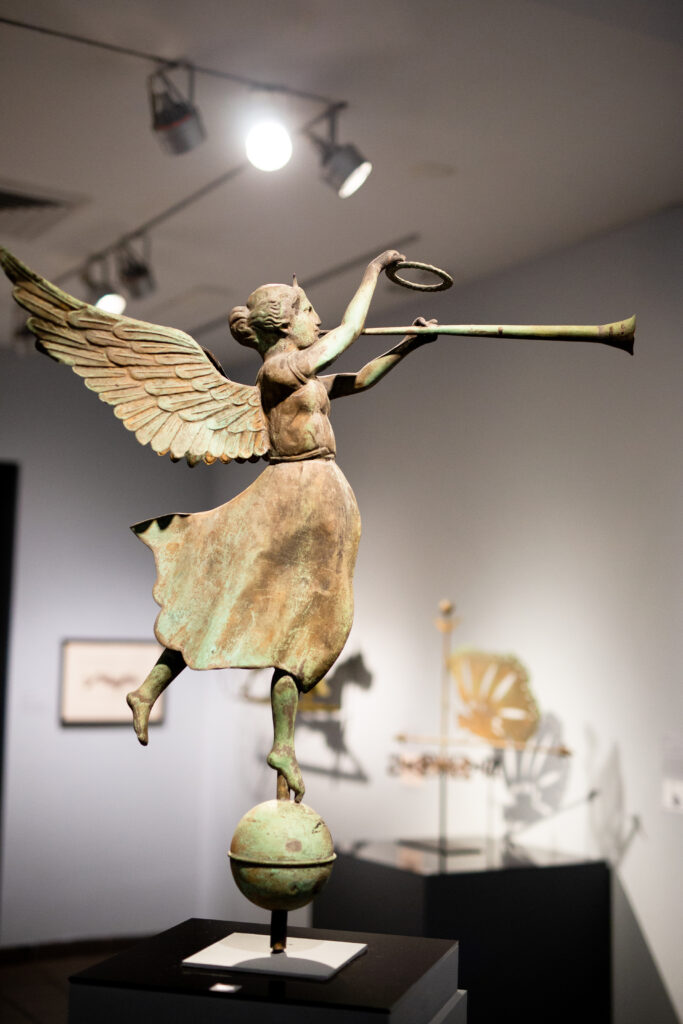
Attributed to E. G. Washburne & Co.
New York
c. 1890
Molded copper and cast zinc with traces of gold leaf
39 x 35 3/4 x 23 1/2 in.
American Folk Art Museum
Gift of Ralph Esmerian, 2005.8.62
Photograph by Gavin Ashworth
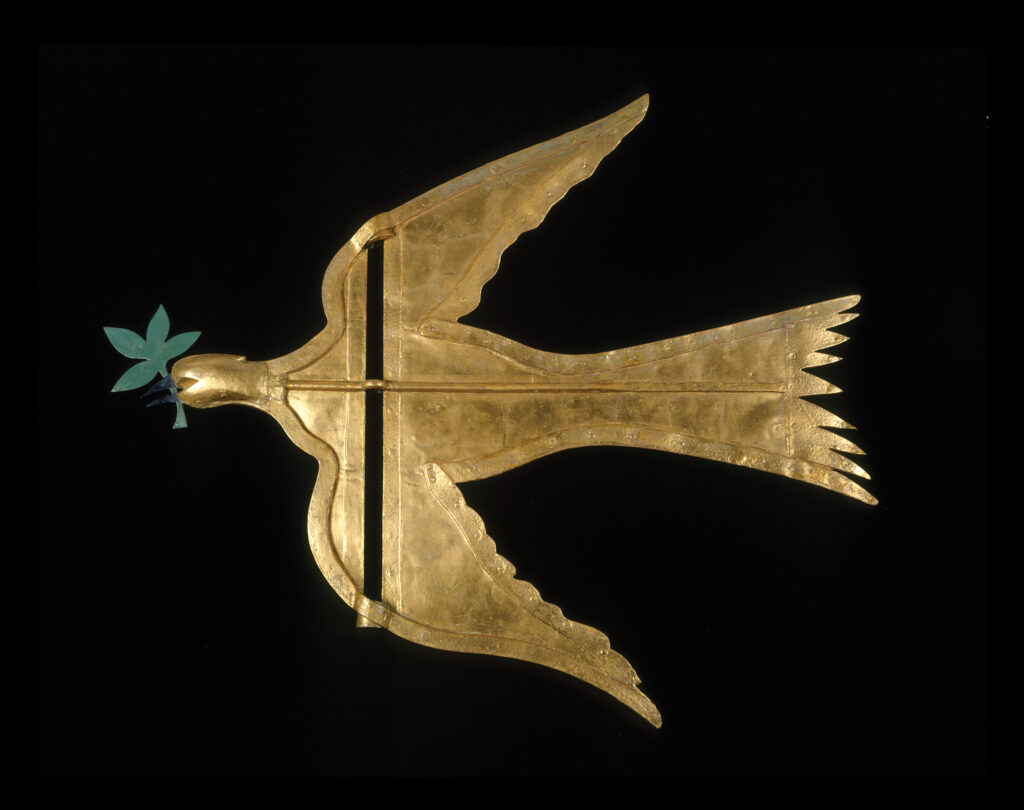
Joseph Rakestraw
Philadelphia, Pennsylvania, 1787
Copper, iron, lead, gilt, and paint
34 3 /4 x 42 1/2 in.
Mount Vernon Ladies’ Association
Transferred to the Mount Vernon Ladies’ Association through the generosity of John Augustine Washington III, 1860, w-2492

Beautiful!! thanks for the write-up about this amazing piece of folk art.